
The AIA is pleased and honored to include the following eight new Honorary Members into the Institute family.
Please allow us a brief moment of nepotism as we give a high-five to two very special people with whom we work closely on a day-to-day basis: Chief Economist Kermit Baker, Hon. AIA, and Managing Director of Component Relations Brenda Henderson, Hon. AIA.
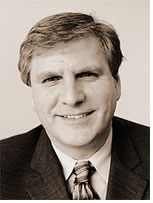 Kermit
Baker, PhD, Hon. AIA
Kermit
Baker, PhD, Hon. AIA
Although Kermit Baker has served the building industry in various capacities
for more than two decades, he is best known to AIA members as the Institute's
chief economist, a post he has held since 1995. In that capacity, Baker
has provided AIA members with timely economic data and forecasting that
have helped the profession better manage its practices and Institute.
His contributions include monthly columns in AIArchitect—in
print and now electronic format—and establishing and conducting the
monthly "Work on the Boards" survey, in which some 300 AIA members
participate each month. Baker also serves as director and principal author
of The AIA Firm Survey and The
AIA Compensation Survey.
Also since 1995, Baker has served as senior research fellow for Harvard University's Joint Center for Housing Studies, a program affiliated with the Harvard Design School and the Kennedy School of Government, through which he directs the Remodeling Futures Program. One of the project's major products is publication of the Remodeling Homes for Changing Households report this year, which studies the nature of renovations undertaken by 26 million homeowners. The Joint Center program also annually publishes the The State of the Nation's Housing report. From 1988-1995, Baker served as vice president of economics for Cahners Publishing Company, Newton, Mass., where he coordinated economic forecasting activities. From 1985 to 1988, he was Cahners' senior building and construction economist.
"Kermit's impeccable research and affable manner make him a favorite to work with, within and outside of AIA headquarters," wrote AIA President Gordon H. Chong, FAIA, in his nomination letter. "His presentations to AIA and affiliate groups all over the country—including state and local components, the Large Firm Roundtable, and annual presentations at the AIA convention, from the keynote speech to informal chats at the AIA Economics and Marketing booth on the exposition floor—attest to his professional and people skills as well as his abiding interest in the profession."
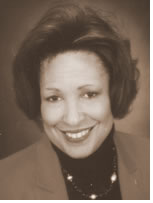 Brenda
Henderson, Hon. AIA
Brenda
Henderson, Hon. AIA
Brenda Henderson joined the AIA's national component in 1983. Since then,
she has compiled an outstanding record of service to her colleagues on
the staff of the national component, the leadership of the AIA's state
and local components and individual members. Her many assignments at the
national component have included the Energy in Architecture program, which
provided knowledge to hundreds of AIA members in 75 different cities;
the AIA national workshops program; the continuing education program when
mandatory continuing education was established at the Institute; and development
of the continuing education component of the AIA national convention.
Most recently, Henderson has taken on the role of managing director of the national component's Component Relations program. "In the relatively short time she has been managing director, Brenda has successfully addressed one of the most pressing concerns that has complicated and compromised the relationship among components: the issue of trust," wrote nominator Janet D. Pike, Hon. AIA, 2001 CACE President. "Brenda has succeeded in tearing down walls while opening minds to a sense of unity and shared purpose . . . she has made the AIA a better place for its members and the national, state, and local components that serve them."
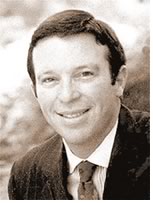 Barry
B. LePatner, Hon. AIA
Barry
B. LePatner, Hon. AIA
Attorney Barry LePatner runs a practice that since its inception in 1980
has championed the architectural profession and the AIA. He has been an
advocate for architects to return to their "master builder"
status of long ago and combine their talents as designers with a recognition
that clients are looking to architects as leaders through all phases of
the design project. LePatner served on the Architects Advisory Committee
in the 1980s, helping the profession navigate through difficult economic
times. Since then, he has been an active and prolific writer and speaker
about the legal and business issues affecting the built environment. He
has served as a lecturer to the Harvard Graduate School of Design since
1990, speaking on "Marketing Strategies and Presentation Skills."
He has served as editor of "The LePatner Report," a design,
construction, and real estate communities newsletter since 1980.
"Perhaps better than anyone, Barry understands the true value of the architect's role—the strength of the underlying creativity and intellectual property brought to the table—and has fought aggressively for a legal basis that reflects that professional worth," wrote Harold L. Adams, FAIA, RIBA, JIA. "He has done much to demystify the complexities surrounding the legal aspects of the profession, drafting contracts that are simple, clear, and absent of vague conditions."
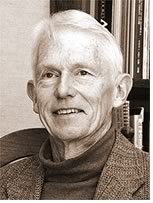 Dr.
Robert McCoy, Hon. AIA
Dr.
Robert McCoy, Hon. AIA
An orthopedic surgeon now retired, Robert McCoy began his love affair
with architecture almost 30 years ago when he purchased a Walter Burley
Griffin-designed house that sparked his interest in the Prairie School
architecture—how it is unique to his hometown of Mason City, Iowa,
as well its influence internationally. After six months of painstaking
research, McCoy published the 40-page article on the Prairie School in
Mason City, which is considered to this day the definitive article on
that particular style and established McCoy as the expert on that particular
historic district. Since that time, he has been a tireless advocate whose
extraordinary efforts have contributed to the preservation of Frank Lloyd
Wright's Stockman House, Park Inn Hotel, and City National Bank. He has
initiated an annual bus tour of the area and edited (and took all the
photos for!) the most recent edition of the Mason City architectural walking
tour guide.
Most recently, McCoy has been working to establish an Interpretive Center for Prairie School architecture and an endowment for a nonprofit foundation that would operate the Stockman House. "Bob is exceedingly deserving of this honor, for his selfless efforts as an advocate for the appreciation and preservation of Prairie School Architecture," wrote Kate Schwennsen, AIA, director of the Central States region, and John "Chip" Overton, AIA, president of AIA Iowa, in a joint nomination from the Central States region and AIA Iowa.
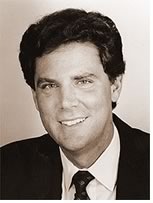 Rep.
Frank Pallone (D-N.J.), Hon. AIA
Rep.
Frank Pallone (D-N.J.), Hon. AIA
Representative Pallone has worked hard during his 14-year tenure in Congress
to protect and restore environmental resources, notably the Jersey shore.
He has shaped legislation that stopped ocean dumping and offshore gas
and oil drilling while championing issues that benefit the state's commercial
and recreational fishing. He also has worked to bring millions of dollars
to the state for beach replenishment, shore protection, dredging of the
area's navigation channels, and maintenance of the national Sandy Hook
recreation area.
Pallone sits on the House Resource and Energy Committee, the Resources Committee, and the Health Committee. He also is active in health-care issues focusing on accessibility and availability, ensuring food safety, and strengthening the federal Superfund program to clean up toxic waste sites. "Congressman Pallone has consistently supported the profession of architecture and the initiatives and priorities of the American Institute of Architects," wrote AIA New Jersey President Eric L. Wagner, AIA, in his nomination letter. "Frank is a 'doer' who is fully committed to the ideals of the AIA, and I am confident that our organization will be well served by Representative Pallone's election to honorary membership," added Ronald P. Bertone, FAIA, in a letter of support.
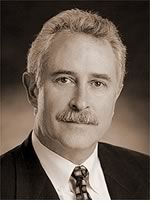 Stephen
P. Sands, Hon. AIA
Stephen
P. Sands, Hon. AIA
Steve Sands served as the executive officer of the California Architects
Board (the California Board of Architectural Examiners) from 1986 to January
2001. During his tenure, he established a licensing program that is widely
respected nationwide as a model of efficiency and quality management.
As early as 1987, he began to work to reestablish interstate practice
between California and the rest of the U.S. He was a member of the task
force that drafted the agreement between California and the National Council
of Architecture Registration Boards, which led ultimately to California
resuming use of the Architecture Registration Exam (ARE). Subsequently,
Sands worked diligently to update and improve the ARE, and instituted
the concept of a nationally computerized exam.
Today, Sands serves as the registrar for the California Contractors State License Board. Sands' dedication to the architecture profession earned him an AIA California Council Presidential Citation in 2000, and the NCARB Presidential Medal in 2001. "The profession of architecture is very fortunate to have a nonarchitect who is an articulate champion of its profession in the government sector," wrote Paul R. Neel, FAIA, dean emeritus of Cal Polytechnic State University at San Luis Obispo. "Steve has positively influenced legislation and policies, both state and nationally, for decades to come. His work for our profession has been brilliant and inspired."
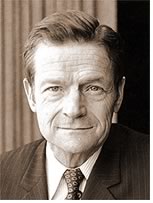 John
R. Silber, PhD, Hon. AIA
John
R. Silber, PhD, Hon. AIA
An entire precinct of Boston has been the beneficiary of president and
chancellor of Boston University's John Silber's care and understanding
of architecture. Under his tenure, more than 7,000,000 square feet of
space—from renovated rowhouses to world-class research facilities—has
been constructed and renovated, as more than $1.2 billion has gone into
improving the built environment under the guidance of this "enlightened
client." Many believe Silber has set the bar for demonstrating how
urban institutions can work with civic governments to improve the built
environment for all citizens. Although he has won accolades from many
groups from the Boy Scouts to the Israeli Peace Medal and has honorary
degrees from 18 universities. Perhaps most telling of his work is a special
citation from the Boston City Council recognizing his contribution to
that great city.
"No ordinary client, Dr. Silber is personally and actively involved in reviewing detailed plans and models, choosing materials and finishes, and is frequently seen on construction sites checking on progress and making sure that the contractors execute the job properly," wrote Scott Simpson, FAIA, AIA New England regional director. "During his tenure, Boston University has become the most active 'developer' in Boston and has consistently produced projects of distinguished quality."
 B.
Carole Steadham, Hon. AIA
B.
Carole Steadham, Hon. AIA
Carole Steadham, for nearly two decades, has been recognized as an effective
administrator and manager in design firms and as a leader of the Society
of Design Administration, the mission of which is "to promote the
exchange of ideas and to educate its members in the related disciplines
of design administration." She served as national president of SDA
in 1999-2000. As a member of SDA's executive committee for 5½ years,
Steadham helped form chapters of the organization in Tucson; Little Rock;
Albuquerque; Delaware; Raleigh; St. Louis; Columbia, Mo.; Austin; and
Fort Worth. She also was instrumental in establishing SDA as a registered
provider for AIA Continuing Education System learning units. In her job
at BOKA Powell Architects, she has implemented a successful CES program
and assists with the firm's intern development program. Steadham received
a 2001 AIA Dallas Citation for volunteering leadership service to the
Dallas Chapter.
"Carole's vision and leadership have transformed SDA into an international organization committed to expanding and enriching the practice of architecture," wrote 2001 AIA Vice President Terrance Brown, FAIA, in Steadham's nomination statement "Carole exemplifies what is best and most admirable in terms of vision, leadership, and service to the profession of architecture."
Copyright 2002 The American Institute of Architects. All rights reserved.
![]()
|
|
|